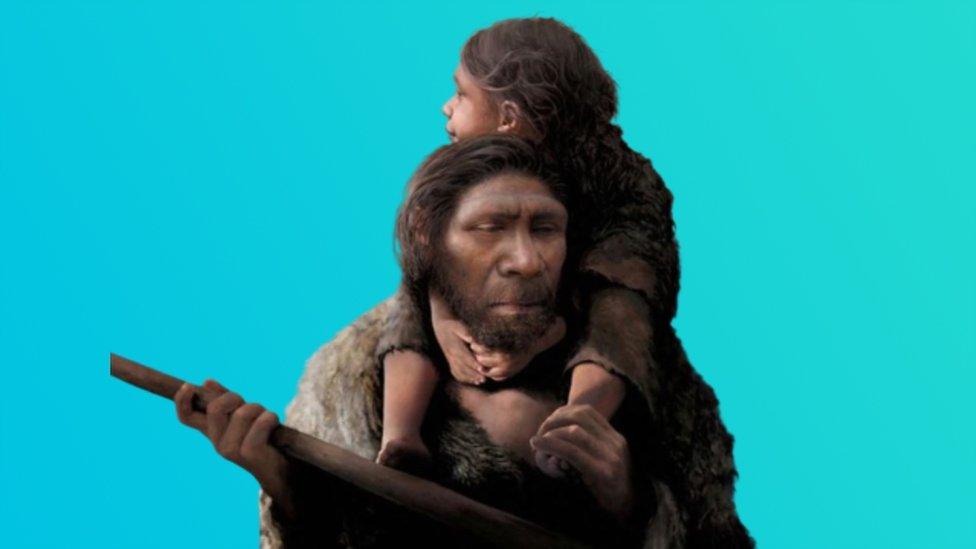Scientists reveal what Neanderthal life may have looked like
- Published
- comments

Artist's impression of how the first-known Neanderthal family might have looked
Scientists have for the first time pieced together what they think Neanderthal life may have looked like.
Experts looked at bone and tooth remains, believed to be around 54,000 years old, from 13 individuals found in two caves in the Altai Mountains in Siberia.
They were able to work out that they belonged to 7 men and 6 women - of which 8 were adults and 5 were children.
They also discovered more information about Neanderthal communities including that women were more likely to leave their homes than men.
What did scientists find?
Chagyrskaya Cave in Siberia where some of the Neanderthals lived
The remains were found in two nearby caves - Chagyrskaya cave and Okladnikov cave in Russia's Altai Mountains.
An international team from the Max Planck Institute for Evolutionary Anthropology in Germany used new scientific techniques - called genetic sequencing - to extract the ancient DNA from the remains and find out more.
As well as being able to work out their genders and whether the Neanderthals were young or old, they also found that many of them were related.
They discovered some of them were from the same family including a father and his teenage daughter, as well as a young boy and a woman who were second-degree relatives - possible a cousin, aunt or grandmother.
Neanderthals lived across Europe and south west and central Asia between about 400,000 to 40,000 years ago.
Their results show that these Neanderthal communities were made up of small groups of close relatives, consisting of around 10 to 20 members.
They also suggest that women travelled more frequently to mix with different groups of Neanderthals, while the men largely stayed home.
Benjamin Peter, one of the authors of the study, said: "Our study provides a concrete picture of what a Neanderthal community may have looked like.
"It makes Neanderthals seem much more human to me," he added.
